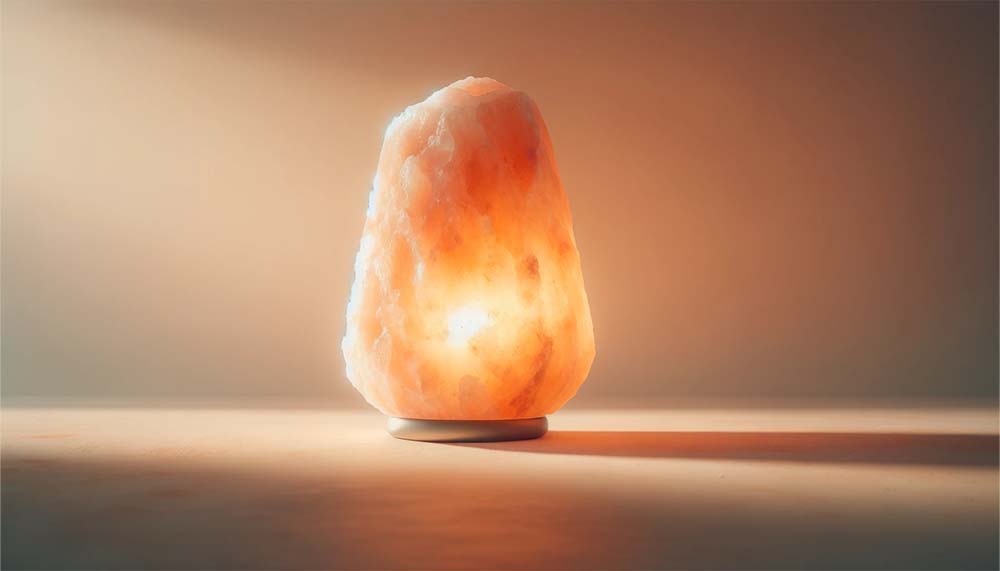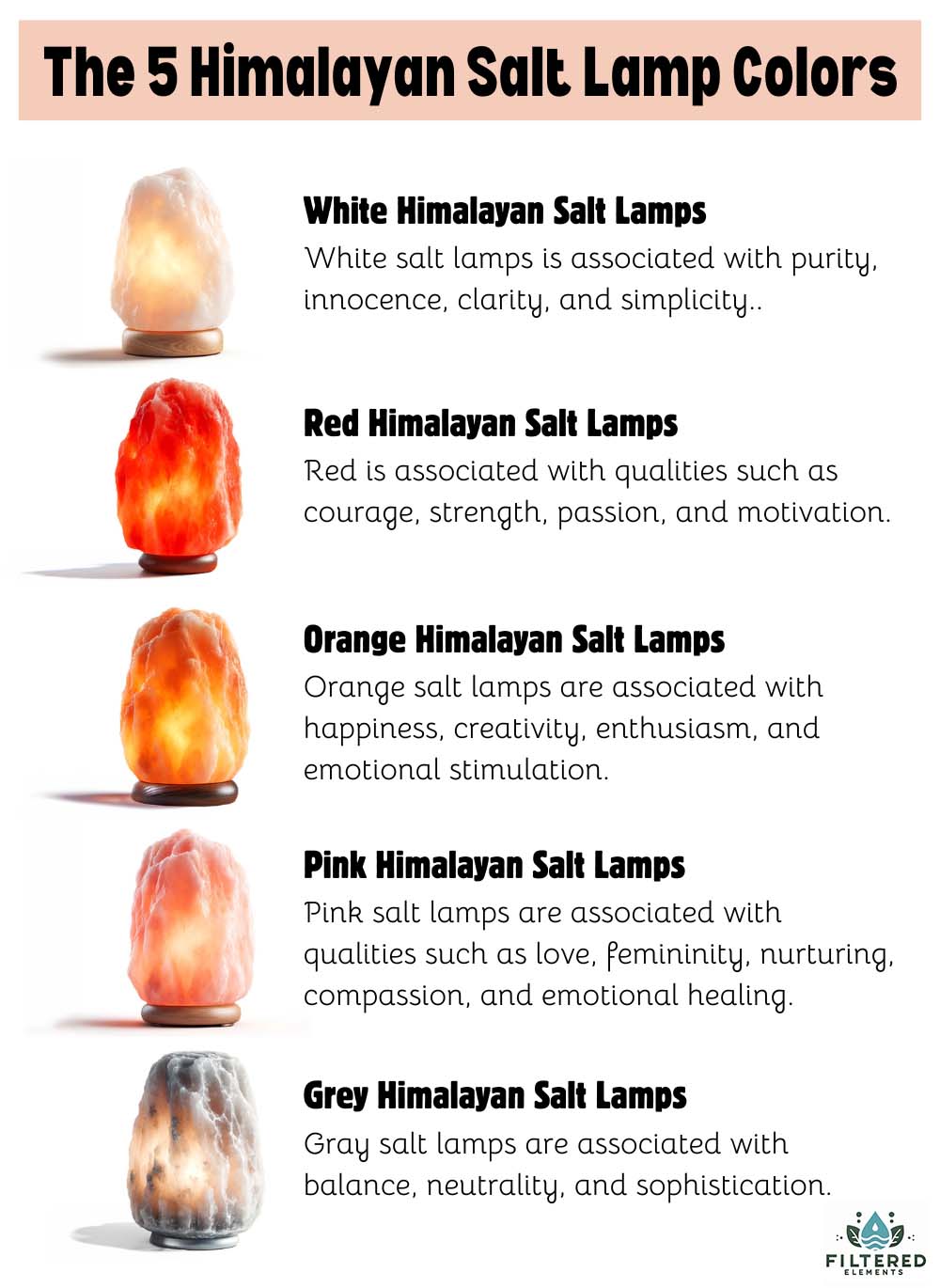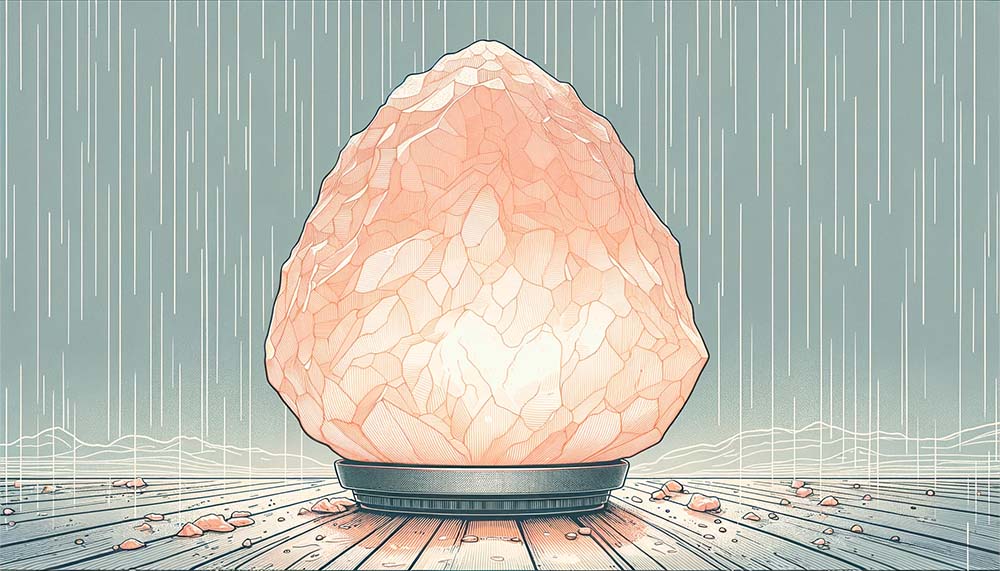Himalayan salt lamps have captivated home decor enthusiasts and wellness seekers alike with their mesmerizing glow and alleged health benefits. These enchanting lamps, carved from ancient salt crystals sourced from the Himalayan mountains, promise to enhance your living space while potentially improving air quality and overall well-being.
In this comprehensive buyer’s guide, we’ll illuminate the key factors to consider when selecting the perfect Himalayan salt lamp for your needs. From evaluating authenticity and size to understanding the importance of color, glow, and craftsmanship, our expert insights will help you navigate the market and make an informed purchase. We’ll also look into the proper placement and care of your lamp to ensure optimal performance and longevity.
Whether you’re drawn to the lamps’ visual allure or intrigued by their purported health benefits, this article will provide the knowledge you need to choose a high-quality, genuine Himalayan salt lamp that elevates your space and enhances your well-being.
What are Himalayan Salt Lamps?
Himalayan salt lamps are unique, decorative lamps made from pink salt crystals mined from the Khewra Salt Mine in Pakistan, near the foothills of the Himalayas. The salt from this region is believed to be millions of years old and contains trace minerals that give it a distinctive pink hue.
To create a Himalayan salt lamp, a large block of salt is hand-carved into a desired shape, such as a natural crystal or a smooth, polished design. The center of the block is then hollowed out to accommodate a light bulb or candle. When lit, the lamp emits a warm, pinkish-orange glow that many find calming and soothing.
The lamps have gained immense popularity in recent years, not just for their visual appeal, but also due to the purported health benefits associated with them. Proponents claim these lamps can purify the air, boost mood, and promote better sleep. However, it’s important to note that scientific evidence supporting these benefitss is limited.
Factors to Consider When Buying a Salt Lamp

When shopping for a Himalayan salt lamp, there are several key factors to keep in mind to ensure you get a high-quality, authentic product that meets your needs. Here are the main things to consider:
1. Authenticity
The most important thing is to make sure you are getting a genuine Himalayan salt lamp made from real salt crystals mined in Pakistan. Many cheap imitations exist on the market, made from rock salt or even synthetic materials that won’t provide the same aesthetic or potential health benefits. Always look for certification of authenticity from the manufacturer.
Genuine Himalayan salt has a distinctive pink color with some variation in hues ranging from light pink to dark orange-red. Real salt lamps are also fragile and may have some natural cracks or chips, so one that looks too “perfect” is another red flag.
Reputable sellers will clearly state the geographical origin of their lamps (which should be the Himalayan mountains of Pakistan) and offer some proof of authenticity such as a certificate, so be sure to look for those indicators when choosing where to purchase from.
Finding an authentic, high-quality Himalayan salt lamp can be a challenge with so many options available. To help you in your search, check out our carefully curated list of the best Himalayan salt lamps on the market. We’ve done the research to bring you the top genuine lamps with stunning visual appeal and optimal craftsmanship.
2. Size and Weight
Salt lamps come in a wide range of sizes to fit different spaces, from small nightlight sizes to larger statement pieces. Generally, larger lamps are recommended for bigger rooms, while small to medium sizes work well for the average bedroom or office.
As a rule of thumb, you need about 1 pound of salt lamp per 16 square feet of space for the best air purification effect according to some salt lamp advocates. So for a 160 square foot bedroom, you’d want a lamp that’s at least 10 pounds. However, the science behind this claim is limited.
In addition to size, also pay attention to the lamp’s weight. Heavier lamps, assuming they are made from real Himalayan salt, tend to be of higher quality. The salt crystals should be substantial and make up the majority of the lamp’s weight. If a lamp feels suspiciously light for its size, it may not be fully authentic.
3. Color and Glow
One of the most appealing aspects of salt lamps is their signature pinkish-orange glow that comes from the minerals in the salt crystals. While colors can range from light pink to deep orange due to natural variations, a warm, inviting radiance is ideal.

Keep in mind that even authentic lamps will have color variations from the natural salt – no two are exactly alike. However, the overall tone should still be a warm pink/orange (unless white or grey). Avoid lamps that are mostly white or have a flat, dull appearance as they may not be genuine.
Also check out our full article on the different colors of Himalayan salt lamps for a deeper dive into the different mineral content and matching your lamp color to your personality.
4. Bulb and Dimmer
The type of light bulb used in your salt lamp can make a big difference in its glow and energy efficiency. Most lamps use standard incandescent bulbs which provide the classic warm radiance.
For the most control over your lamp’s ambiance, look for one that has dimming capabilities. Being able to adjust the light level is great for using the lamp as a night light or to create different moods. Just make sure that if you want a dimmable lamp, a compatible dimmer switch is included and that replacement bulbs are readily available.
The ideal bulb wattage for most Himalayan salt lamps is 15 watts; a higher wattage risks overheating the lamp and altering the crystal color over time. However, for very large lamps, a 25 watt bulb may be suitable. Always defer to the lamp’s included instructions for the proper bulb to use.
5. Base and Shape
Himalayan salt lamps come in a variety of decorative shapes to suit different aesthetics. The most common is the natural chunk shape that highlights the raw, organic contours of the salt crystals. This fits well with bohemian, rustic, and eclectic decor.
For a more polished look, geometric shapes like pyramids and spheres offer an eye-catching modern touch. Some lamps even come crafted into intricate designs like bowls, baskets, or animal shapes for a unique artistic flair.
Whichever shape appeals to you, make sure the lamp has a sturdy base to keep it upright and secure, especially for larger lamps. Bases made from authentically harvested neem wood are popular for their durability. High quality lamps should have an attention to detail in the craftsmanship of the base.
Placement and Care Tips

To get the most out of your Himalayan salt lamp, it’s essential to place it in the right location and take proper care of it. Here are some tips for optimal placement and maintenance:
Ideal Locations
- Place your salt lamp near areas where you spend the most time, such as your bedroom, living room, or office.
- Keep the lamp away from direct sunlight and heat sources, as excessive heat can cause the salt to melt or deteriorate.
- Avoid placing the lamp in humid areas like bathrooms or near open windows, as moisture can affect its performance.
Safety Considerations
- Ensure your salt lamp is placed on a stable, level surface to prevent tipping or falling.
- Keep the lamp away from flammable materials and out of reach of children and pets.
- Always use a properly fitting light bulb with the correct wattage to avoid overheating.
Cleaning and Maintenance
- Gently dust your salt lamp regularly with a soft, dry cloth to keep it clean and shining.
- If the lamp becomes damp or wet, unplug it and let it dry completely before using it again.
- If your lamp starts to “sweat” or appear wet, it may be a sign of high humidity. Consider moving it to a drier location or using a dehumidifier in the room.
By following these simple placement and care tips, you can ensure that your Himalayan salt lamp stays in excellent condition and provides you with its beautiful ambiance and potential benefits for years to come.
Benefits of Himalayan Salt Lamps

Himalayan salt lamps are renowned for their wide range of potential health and wellness benefits. While more scientific research is needed to fully understand the extent of these benefits, many users report positive experiences with their salt lamps. Here are some of the most common benefits associated with Himalayan salt lamps:
- Air Purification: Salt lamps are believed to help purify the air by attracting and trapping pollutants, allergens, and other airborne irritants. As the lamp warms up, it is said to release negative ions, which can help neutralize positive ions in the air, leading to cleaner, fresher air.
- Mood Enhancement: The soft, warm glow of a Himalayan salt lamp can create a soothing and relaxing ambiance, which may help reduce stress, anxiety, and depression. The gentle light is thought to promote a sense of calm and well-being, making it an excellent addition to bedrooms, meditation spaces, or relaxation areas.
- Better Sleep: Many users report that having a salt lamp in their bedroom helps promote better sleep. The low, soothing light can help signal to your body that it’s time to wind down and prepare for rest. Additionally, the potential air-purifying properties may lead to improved breathing and a more comfortable sleeping environment.
- Electromagnetic Radiation Reduction: Some proponents of salt lamps suggest that they may help neutralize electromagnetic radiation emitted by electronic devices like computers, televisions, and cell phones. While more research is needed to confirm this benefit, placing a salt lamp near your electronics may provide some peace of mind.
- Aesthetic Appeal: Beyond their potential health benefits, Himalayan salt lamps are simply beautiful and unique decorative pieces. The natural, pink-hued salt crystals create a stunning and inviting ambiance in any room, making them a popular choice for home decor and gift-giving.
While the benefits of Himalayan salt lamps are largely anecdotal and require further scientific study, many people find value in their calming presence and potential positive effects on health and well-being. If you’re interested in experiencing these benefits for yourself, consider adding a high-quality, authentic Himalayan salt lamp to your home or workspace.
Alternative Air Purifying Solutions

While Himalayan salt lamps offer a natural and visually appealing way to potentially enhance indoor air quality, they should not be relied upon as the sole solution. To create a truly healthy and pollutant-free living environment, it’s important to incorporate a range of proven strategies and complementary techniques.
Here are some of the most effective methods for improving indoor air quality:
True HEPA Air Purifiers
High-quality air purifiers equipped with True HEPA filters are the gold standard for removing airborne particles like dust, pollen, pet dander, and smoke. These mechanical filters are certified to capture at least 99.97% of particles as small as 0.3 microns, significantly reducing indoor pollutants. Unlike salt lamps, air purifiers continuously cycle and filter large volumes of air, providing a measurable and scientifically-proven method for enhancing air quality.
For the most effective and reliable way to remove airborne contaminants and breathe cleaner, healthier air in your home, be sure to check out our list of the best air purifiers models on the market, expertly selected by our team at Filtered Elements.
Houseplants
Certain indoor plants, such as snake plants, spider plants, and peace lilies, are known for their natural air-purifying abilities. These plants can help remove volatile organic compounds (VOCs) and other pollutants from the air through their leaves and roots. While not as effective as air purifiers, houseplants offer a natural and aesthetically pleasing way to supplement air cleaning efforts.
Regular Cleaning and Ventilation
Maintaining a clean home is crucial for reducing indoor air pollutants. Regular vacuuming with a HEPA-filtered vacuum cleaner, dusting with a damp cloth, and mopping floors can help remove dust, allergens, and other particles that settle on surfaces. Additionally, ensuring proper ventilation by opening windows and using exhaust fans in bathrooms and kitchens can help remove stale, polluted air and bring in fresh air from outside.
Final Thoughts
When selecting a Himalayan salt lamp, prioritize authenticity, size, color, and craftsmanship to ensure you receive a genuine, high-quality product. Proper placement and care are essential for optimal performance and longevity. While salt lamps offer potential benefits such as air purification and mood enhancement, they should be seen as a complementary solution rather than a standalone air purifying method.
For the most effective indoor air quality improvement, consider incorporating proven strategies like using True HEPA air purifiers, maintaining houseplants, and adhering to regular cleaning and ventilation practices. By combining these techniques with the allure of a Himalayan salt lamp, you can create a healthier, more inviting living space that promotes well-being.
Remember, while the benefits of salt lamps are largely anecdotal, many people find value in their calming presence and aesthetic appeal. Ultimately, the decision to incorporate a Himalayan salt lamp into your home or workspace should be based on your personal preferences and the desire to enhance your environment’s ambiance and potential wellness benefits.




